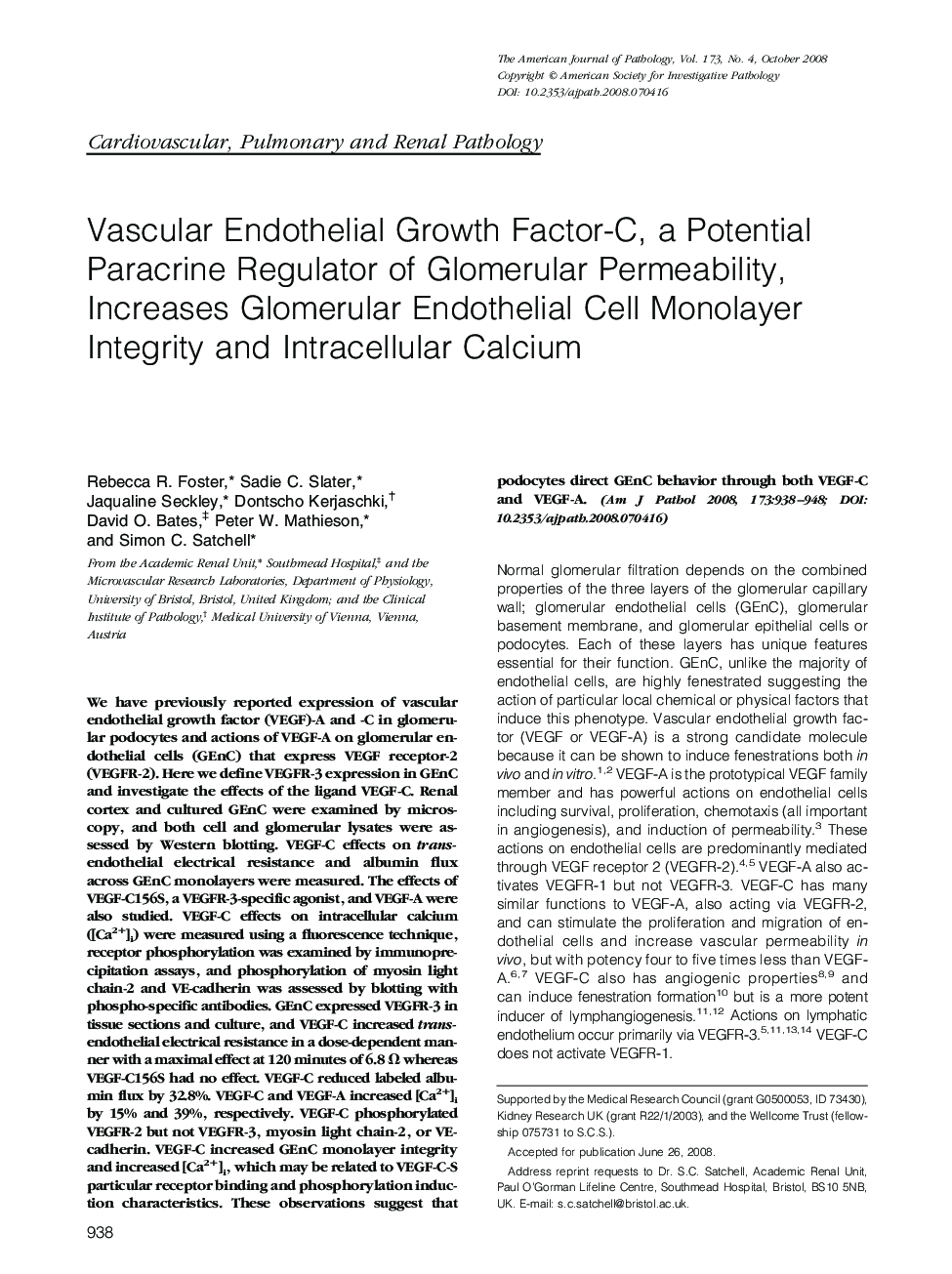| Article ID | Journal | Published Year | Pages | File Type |
|---|---|---|---|---|
| 5937974 | The American Journal of Pathology | 2008 | 11 Pages |
Abstract
We have previously reported expression of vascular endothelial growth factor (VEGF)-A and -C in glomerular podocytes and actions of VEGF-A on glomerular endothelial cells (GEnC) that express VEGF receptor-2 (VEGFR-2). Here we define VEGFR-3 expression in GEnC and investigate the effects of the ligand VEGF-C. Renal cortex and cultured GEnC were examined by microscopy, and both cell and glomerular lysates were assessed by Western blotting. VEGF-C effects on trans-endothelial electrical resistance and albumin flux across GEnC monolayers were measured. The effects of VEGF-C156S, a VEGFR-3-specific agonist, and VEGF-A were also studied. VEGF-C effects on intracellular calcium ([Ca2+]i) were measured using a fluorescence technique, receptor phosphorylation was examined by immunoprecipitation assays, and phosphorylation of myosin light chain-2 and VE-cadherin was assessed by blotting with phospho-specific antibodies. GEnC expressed VEGFR-3 in tissue sections and culture, and VEGF-C increased trans-endothelial electrical resistance in a dose-dependent manner with a maximal effect at 120 minutes of 6.8 Ω whereas VEGF-C156S had no effect. VEGF-C reduced labeled albumin flux by 32.8%. VEGF-C and VEGF-A increased [Ca2+]i by 15% and 39%, respectively. VEGF-C phosphorylated VEGFR-2 but not VEGFR-3, myosin light chain-2, or VE-cadherin. VEGF-C increased GEnC monolayer integrity and increased [Ca2+]i, which may be related to VEGF-C-S particular receptor binding and phosphorylation induction characteristics. These observations suggest that podocytes direct GEnC behavior through both VEGF-C and VEGF-A.
Related Topics
Health Sciences
Medicine and Dentistry
Cardiology and Cardiovascular Medicine
Authors
Rebecca R. Foster, Sadie C. Slater, Jaqualine Seckley, Dontscho Kerjaschki, David O. Bates, Peter W. Mathieson, Simon C. Satchell,
